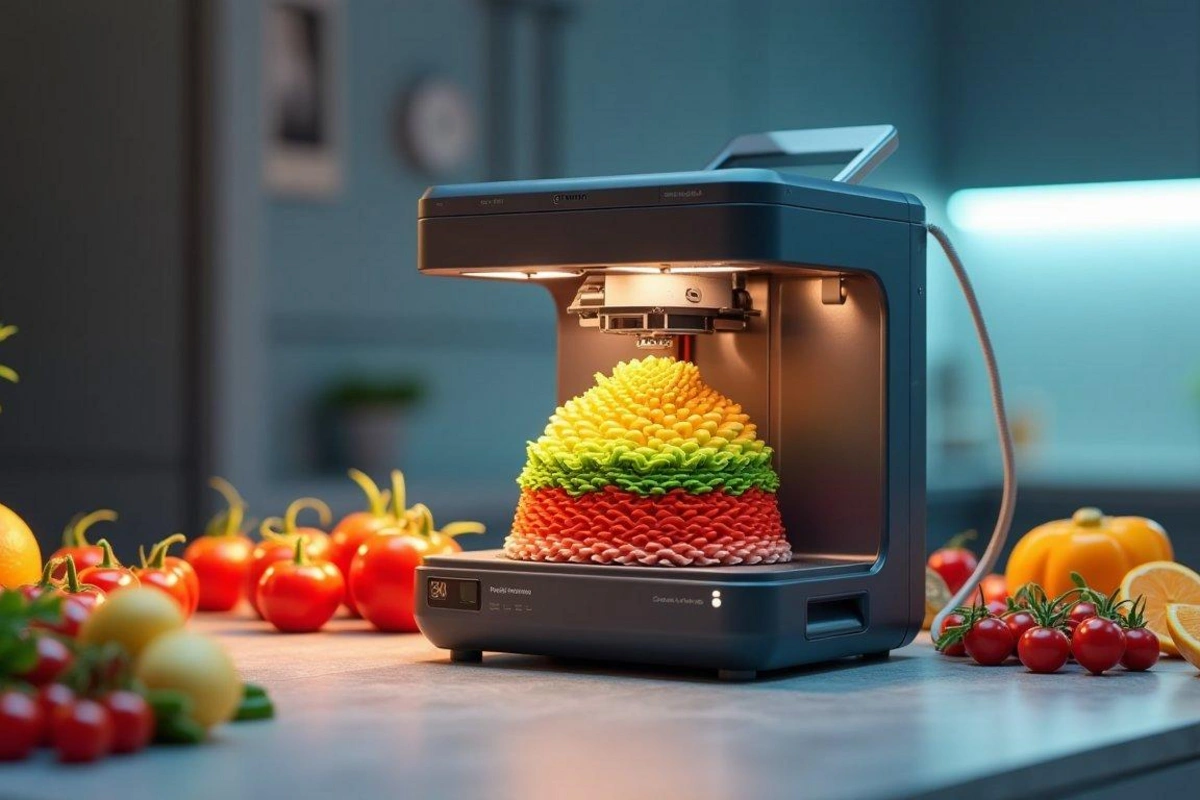The Future of Food: How 3D Food Printing Will Change Our Habits3D food printing is a technology that is rapidly gaining momentum and could revolutionize our approach to food preparation and consumption. This innovative method allows creating edible items

In recent years, 3D printing technologies have not only invented new ways of creating art objects but have also stepped into the most important sphere - nutrition. Today, we are witnessing a revolution in how we will eat in the future.
3D food printing is not just a trendy fad but a real breakthrough that can change our habits, attitude towards food, and even the way products are manufactured. 3D printing specialists have developed machines that can "print" dishes from natural ingredients such as meat, vegetables, chocolate, and even seafood, layer by layer.
One of the main advantages of this technology is the ability to create complex and non-standard shapes. Imagine a perfect pie shaped like your face, or a chocolate bar with perfectly matched texture that melts on your tongue. But this is just a small part of what 3D food printers can offer.
Even more significantly, this technology allows addressing food production sustainability issues. With 3D printing, products can be created with minimal waste, and ingredients that might be discarded in traditional production can be used. For example, leftover vegetables or fruits can be printed into nutritious bars that will help tackle the problem of food waste.
However, the most ambitious forecasts link the future of 3D printing with the development of personalized nutrition. Printers can adapt dishes to specific needs of each person, creating products with precise proportions of proteins, carbohydrates, and fats to maximize health support. This is especially relevant for people with special diets or those dealing with chronic diseases.
Furthermore, 3D printing will be a key element in solving global food shortage problems. In countries with limited access to traditional food sources, this technology can enable the creation of products that are easy to transport and prepare in any conditions, including extreme ones, such as space expeditions.
But the technology will still need to be adapted for mass production. Issues related to equipment costs and availability of necessary ingredients remain relevant. However, as technology develops, the cost of 3D food printing will likely decrease, opening new opportunities for households and businesses.
The future of food will undoubtedly be much more technological, individualized, and environmentally friendly. The only question is when this innovation will become accessible to each of us.
Similar News
How to maintain youthful skin after 30?After 30, the skin begins to age more actively, but there are several effective ways to maintain its youth:1. Daily skincare routine:- Thorough cleansing- Moisturizing- Sun protection (SPF)2. Healthy lifestyle:- Adeq
Every woman dreams of radiant and firm skin that will remain beautiful for years to come. After 30, skin begins to lose moisture, collagen production decreases,...











